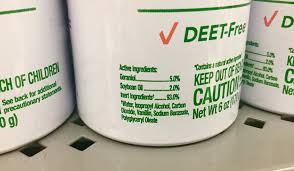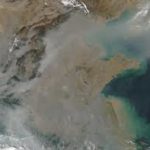DEET and insect repellant creams
If you live in an area with numerous biting insects like mosquitoes, flies, ticks etc, you must have heard the use of mosquito-repellant creams. DEET is one of the active ingredients found in most of the insect repellant creams. The chemical formula for DEET is N, N-diethyl-3-methyl-benzamide. There are other chemicals like N,N diethyl benzamide (ingredient of Odomos cream), picardin applied on the skin and permethrin applied on clothing.
People with high concentrations of steroids or cholesterol on their skin surface produce excess amounts of certain acids like uric acids and exhaled carbon dioxide that attract mosquitoes. Also scented sun screens, perfumes can attract mosquitoes. DEET works by blocking the insect’s chemical receptors for carbon dioxide and lactic acid which are the attractants. So mosquitoes do not bite DEET applied skin.
There is always a negative effect when anything works against nature. High dosage or very long term exposure can ultimately cause disturbances in the nervous system. It is found to be slightly toxic to birds, fish and aquatic invertebrates. Chemical repellents should be used with care according to given instructions. You will be surprised to know that this DEET chemical can actually melt and dissolve plastic and rayon.
DEET is the most effective and best studied insect repellent. Although DEET is very good repellent, the non-availability of 3-methylbenzoic acid from indigenous sources may make it an expensive chemical. Apart from chemicals, repellent creams can also be made from plants. Oil of lemon eucalyptus can ward off mosquitoes. Cream based out of plants like marigold, Thai lemongrass, neem, peppermint and catnip can also be effective against mosquitoes.
What is a water hole?
What important role does the tongue play?









